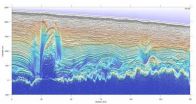(Press-News.org) CORVALLIS, Ore. – Scientists have used coyote and red fox fur trapping records across North America to document how the presence of wolves influences the balance of smaller predators further down the food chain.
From Alaska and Yukon to Nova Scotia and Maine, the researchers have demonstrated that a "wolf effect" exists, favoring red foxes where wolves are present and coyotes where wolves are absent.
This effect requires that enough wolves be present to suppress coyotes over a wide area. Fur trapping records from Saskatchewan and Manitoba reveal that where wolves are absent in the southern agricultural regions of each province, coyotes outnumber foxes on average by 3-to-1. However, where wolves are abundant in the north, the balance swings dramatically in favor of foxes on average by 4-to-1 and at an extreme of 500-to-1 at one site.
In between is a 200-kilometer (124-mile) transition zone where too few wolves are present to tip the balance between coyotes and foxes.
The results of the study by Thomas Newsome and William Ripple in the Oregon State University Department of Forest Ecosystems and Society were published today in the Journal of Animal Ecology by the British Ecological Society.
"As wolves were extirpated across the southern half of North America, coyotes dramatically expanded their range," said Newsome, a post-doctoral researcher at Oregon State. "They were historically located in the middle and western United States, but they dispersed all the way to Alaska in the early 1900s and to New Brunswick and Maine by the 1970s."
"So essentially coyotes have been dispersing into wolf and red-fox range in the north but also into areas where wolves are absent but red fox are present in the East," Newsome added.
Newsome came to the United States on a Fulbright scholarship from Australia where he earned a Ph.D. from the University of Sydney and specialized in the study of dingoes – that continent's top predator. There's a debate among Australians, he said, about the potential role of dingoes in suppressing introduced pests that have already decimated wildlife there.
"Over the last 200 years, Australia has had the highest extinction rate in the world," Newsome said. "The debate is about whether the dingo can provide positive ecological benefits. Where dingoes have been removed, the impacts of introduced red foxes and feral cats have been quite severe on native fauna."
Dingoes are managed as a pest in New South Wales, the country's most populous state. To reduce dingo predation in the livestock industry, Australia also maintains the world's longest fence, which runs for 5,500 kilometers (3,400 miles) in an attempt to exclude dingoes from almost a quarter of the continent.
In North America, the effect of wolves on coyotes and red foxes provides a natural case study that can be instructive for Australians. "Australians can learn a lot from how wolves are managed in North America, and Americans can learn from the ecological role of the dingo," Newsome said.
As coyotes have expanded in North America, they have become a major cause of concern for the livestock industry. In the United States in 2004, researchers estimated annual losses due to coyote predation on sheep and cattle at $40 million. To reduce those damages, the Wildlife Service of the U.S. Department of Agriculture has a program to reduce coyote numbers, an effort that has drawn criticism from conservation groups.
In reviewing the fur trapping data from two U.S. and six Canadian jurisdictions, Newsome and Ripple eliminated potential sources of bias such as records from fur farms that raise foxes. The fur prices of coyotes and red foxes are also strongly correlated, and the two species occupy much of the same types of habitat, so they are equally likely to be targeted and caught in hunters' traps.
"This study gives us a whole other avenue to understand the ecological effects of wolves on landscapes and animal communities," said Ripple. He has studied the influence of carnivores on their prey — such as deer and elk — and on vegetation from aspen trees to willows. He and his colleagues have shown that the removal of top predators can cause dramatic shifts within ecosystems.
Wolves are naturally recolonizing many areas of the United States following their reintroduction into Yellowstone National Park and surrounding areas in 1995. Scientists are studying wolf interactions with other species, and in particular, there is interest in determining whether recolonizing wolves will suppress coyote populations and have cascading effects on red foxes and other species.
INFORMATION:
Newsome received funding from the Australian-American Fulbright Commission and from the government and universities of New South Wales in Australia.
Animal trapping records reveal strong wolf effect across North America
2014-06-16
ELSE PRESS RELEASES FROM THIS DATE:
No long-term anxiety or distress associated with low-dose computed tomography screening
2014-06-16
DENVER - Examination and review of several studies that evaluated patient-centered outcomes for individuals undergoing low-dose computed tomography (LDCT) screening for lung cancer found that screening does not appear to significantly influence overall health-related quality of life or result in long-term changes in anxiety or distress, but that positive results in the short-term, do increase distress levels.
The National Lung Cancer Screening Trial showed that three annual LDCT screens, in contrast to standard lung x-rays, can decrease lung cancer mortality by 20% and ...
Improved diagnostic performance of low-dose computed tomography screening
2014-06-16
DENVER - Investigators of the COSMOS (Continuous Observation of SMOking Subjects) study show good compliance and patient survival outcomes using a 5-year low-dose computed tomography (LDCT) screening protocol in individuals at high-risk of developing lung cancer. This protocol had fewer patients requiring further diagnostic follow-up compared to other studies, including the National Lung Cancer Screening Trial (NLST), with a minimal number of incorrect diagnoses.
The 5-year survival rate for early diagnosed lung cancer is 50% but after the cancer has spread to distant ...
Bionic pancreas controls blood sugar levels in adults, adolescents with type 1 diabetes
2014-06-16
The latest version of a bionic pancreas device has been successfully tested in two five-day clinical trials – one in adults, the other in adolescents – that imposed minimal restrictions on
patient activities. A team of investigators from Boston University (BU) and Massachusetts General Hospital (MGH) report study results in a New England Journal of Medicine paper being issued online to coincide with a presentation (abstract # 237-OR) at the American Diabetes Association Scientific Sessions. The device controls blood sugar in patients with type 1 diabetes using doses ...
Bionic pancreas outperforms insulin pump in adults, youth
2014-06-16
People with type 1 diabetes who used a bionic pancreas instead of manually monitoring glucose using fingerstick tests and delivering insulin using a pump were more likely to have blood glucose levels consistently within the normal range, with fewer dangerous lows or highs. The full report of the findings, funded by the National Institutes of Health, can be found online June 15 in the New England Journal of Medicine.
The researchers – at Boston University and Massachusetts General Hospital – say the process of blood glucose control could improve dramatically with the ...
Advances in predictive hypoglycemia-minimizing technology from Animas-JDRF collaboration
2014-06-16
CHESTERBROOK, Pennsylvania, June 16, 2014 –Animas Corporation today shared encouraging results from its predictive hypoglycemia-minimizing algorithm in development. Data from a clinical feasibility study demonstrated that the algorithm was capable of helping maintain glucose above hypoglycemic levels an average of 99.1 percent of the time for the 12 participants investigated, all of whom were adults with type 1 diabetes. The study was conducted by Animas in collaboration with industry, academia and JDRF as part of an effort to advance the development of a predictive blood ...
Arctic warming linked to fewer European and US cold weather extremes, new study shows
2014-06-15
Climate change is unlikely to lead to more days of extreme cold, similar to those that gripped the USA in a deep freeze last winter, new research has shown.
The Arctic amplification phenomenon refers to the faster rate of warming in the Arctic compared to places further south. It is this phenomenon that has been linked to a spike in the number of severe cold spells experienced in recent years over Europe and North America.
However, new research by University of Exeter expert Dr James Screen has shown that Arctic amplification has actually reduced the risk of cold extremes ...
Parasitic worms of pigs could provide new treatments of human diseases
2014-06-15
New treatments for inflammatory bowel disease, rheumatoid arthritis, multiple sclerosis, diabetes and autism could be on the horizon, after a global University of Melbourne – lead study successfully mapped the genes of a parasitic worm in pigs.
Lead researcher, Dr Aaron Jex, Faculty of Veterinary Science, said, "We know that humans infected with the harmless, 'pig whipworm' can have significantly reduced symptoms linked to autoimmune diseases. And now we have the genetic sequence of the worm, it opens the door to future human drug designs and treatment."
Although the ...
Melting and refreezing of deep Greenland ice speeds flow to sea, study says
2014-06-15
Beneath the barren whiteness of Greenland, a mysterious world has popped into view. Using ice-penetrating radar, researchers have discovered ragged blocks of ice as tall as city skyscrapers and as wide as the island of Manhattan at the very bottom of the ice sheet, apparently formed as water beneath the ice refreezes and warps the surrounding ice upwards.
The newly revealed forms may help scientists understand more about how ice sheets behave and how they will respond to a warming climate. The results are published in the latest issue of Nature Geoscience.
"We see ...
Exploring a parasitic tunnel boring machine
2014-06-15
Researchers have deduced essential biological and genetic information from the genome sequence of the whipworm, an intestinal parasitic worm that infects hundreds of millions of people in developing countries.
This information acts as the foundation for the development of new strategies and treatments against this debilitating parasite.
The whipworm is one of three types of soil-transmitted parasitic worms that collectively infect nearly two billion people. While infections often result in mild disease they may also lead to serious and long-term damage such as malnutrition, ...
Understanding the unique nature of children's bodies and brains
2014-06-15
June 15, 2014 (San Francisco) – With the increase in childhood obesity and the associated increase in type 2 diabetes among children and adolescents, there is growing interest in how children's bodies process the foods they eat and how obesity and diabetes begin to develop at early ages. Two studies presented at the American Diabetes Association's 74th Scientific Sessions® help to shed light on this topic.
One study, by researchers at the Yale School of Medicine, compared how the brains of adolescents and adults differed in their response to ingestion of a glucose drink. ...


